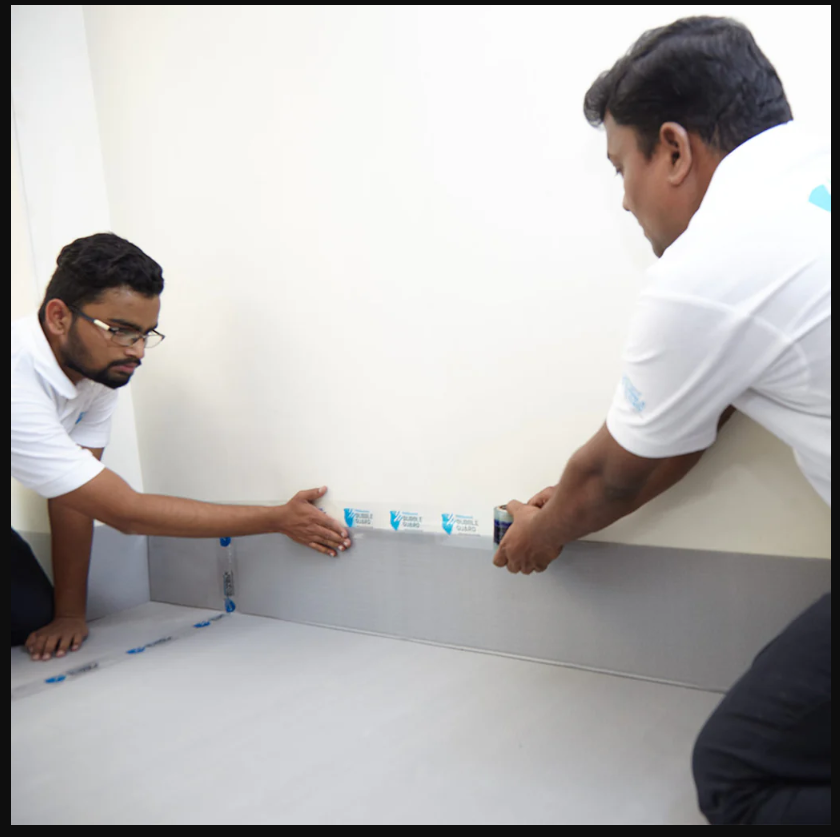Tiles are among the most preferred choices for flooring in both residential and commercial spaces due to their elegance, durability, and easy maintenance. However, during construction, renovation, or interior work, even the toughest tile surfaces are vulnerable to scratches, cracks, chemical spills, and dust accumulation. This is where the tiles covering sheet comes into play as a practical and essential solution for short-term and temporary floor protection.
Whether you're a builder, interior designer, contractor, or homeowner, protecting tiles during active work environments can save you significant costs, time, and rework. This blog explores the growing importance of tiles covering sheet, their materials, benefits, use cases, and how they contribute to efficient project execution.
What Is a Tiles Covering Sheet?
A tiles covering sheet is a specially engineered protective sheet designed to shield tile flooring from mechanical damage, stains, impact, and abrasion during construction, renovation, or heavy foot traffic. These sheets are generally lightweight, durable, and easy to install, making them ideal for temporary protection of all kinds of tiled surfaces, including ceramic, porcelain, vitrified, and natural stone tiles.
They come in a variety of materials such as multi-layered polymer composites, corrugated polypropylene, foam-backed laminates, and recyclable plastic sheets. Some are water-resistant and anti-skid, providing added protection in areas where liquids and tools are frequently in use.
Why Is Tile Protection Necessary?
Tiles are sturdy but not immune to damage. Here are a few scenarios where protection becomes absolutely critical:
- Construction Work: During plastering, wall painting, ceiling installations, or drilling, tiles are exposed to dust, falling debris, paint drips, and heavy machinery.
- Renovation Projects: Flooring may already be installed when other interior tasks are underway. In this case, tiles must be preserved until project completion.
- Shifting and Movement: Frequent movement of ladders, furniture, or tool trolleys can cause scratches or cracks.
- Water and Chemical Exposure: Leakages or accidental spills during plumbing or cleaning work can stain or discolor tiles.
In all these cases, using a tiles covering sheet acts as a protective barrier that maintains the integrity of the tiles and prevents rework.
Key Features of a Good Tiles Covering Sheet
Not all floor protection products are the same. A high-quality tiles covering sheet offers the following characteristics:
- Impact Resistance: Protects tiles from falling tools and equipment.
- Anti-Skid Surface: Prevents slips and falls for workers.
- Waterproofing: Guards against water seepage and chemical spills.
- Reusable: Designed for multiple uses, reducing material wastage.
- Lightweight & Easy to Cut: Simplifies application, even in irregular corners.
- Eco-Friendly: Made from recyclable or sustainable materials.
- Dust & Stain Resistant: Keeps the working area clean and free of permanent stains.
Modern tiles covering sheet products are engineered with honeycomb or multi-layered structures that distribute weight evenly and resist compression, making them ideal for dynamic work sites.
Common Applications of Tiles Covering Sheet
The use of tile protection sheets has extended across industries due to their versatility. Here are some common application scenarios:
1. Residential Projects
When interiors of new homes are being completed, the flooring is often already installed. A tiles covering sheet ensures that tile surfaces remain untouched until final delivery.
2. Commercial Buildings
Office spaces, showrooms, and retail outlets undergoing fit-outs or remodeling require clean and undamaged flooring. Protective sheets make maintenance effortless.
3. Industrial Setups
Factories and warehouses use these sheets temporarily to protect flooring during machinery installation or electrical work.
4. Event and Exhibition Halls
Temporary setups for events can damage tiles due to heavy footfall and stage equipment. Floor protection becomes essential for safeguarding against short-term wear and tear.
5. Hotels and Hospitals
During maintenance or refurnishing, operational sections may still be in use. Tile protection sheets help in maintaining hygiene and safety standards while shielding the floor.
Installation and Handling
Using a tiles covering sheet is simple and does not require specialized labor. Here are the general steps for its installation:
- Clean the tile surface to remove any dust or loose particles.
- Cut the sheet to match the required dimensions using a utility knife or scissors.
- Lay it flat on the tile surface, ensuring no air pockets or wrinkles.
- Secure the edges with masking or surface-safe tape if needed.
Because many of these sheets are reusable, they can be lifted, cleaned, and stored for the next job, reducing waste and cost in the long run.
Advantages Over Traditional Floor Covers
Builders have long used cloth, tarpaulin, cardboard, or plastic sheets to protect tiles, but these materials often fall short in durability and moisture resistance.
In contrast, a high-performance tiles covering sheet offers:
- Superior load-bearing capacity
- Tear and puncture resistance
- Moisture barrier properties
- Ease of installation and removal
- Better safety with anti-skid surfaces
These benefits not only reduce the likelihood of tile damage but also improve site management and worker safety.
Environmental Considerations
With increasing awareness about construction waste and its environmental impact, choosing recyclable and reusable products like tiles covering sheet helps reduce the overall footprint. These sheets are often made from polypropylene or other recyclable polymers, which can be collected and processed post-use without contributing to landfill accumulation.
Furthermore, reusable sheets reduce the need for single-use protective materials, aligning with sustainability goals for green construction.
Conclusion
Whether you’re managing a large commercial project or a small home renovation, protecting your investment in tile flooring is critical. A tiles covering sheet is not just a simple barrier—it’s a smart and cost-effective choice for any construction or renovation environment.
By choosing the right protective material, you ensure that your tiles remain in pristine condition throughout the project lifecycle, avoiding the need for repairs or replacements. Easy to install, eco-friendly, and highly effective, these sheets are becoming a standard part of construction site planning—and for good reason.





Comments